So, you want to learn how to get traffic? Whether you’re trying to build an online business or ecommerce store, sell your own products or services, or simply make money through ad revenue or affiliate marketing… you need to master the art of driving traffic.
In this book, Russell Brunson provides proven strategies and tactics that have helped countless entrepreneurs like you get more visitors to their content, websites, and sales funnels. And this book isn’t just about getting any type of visitor – it’s about understanding exactly who your dream customer is, so you can attract people who are ready to engage with your content and convert into loyal customers.
First, we’ll talk about the core strategy of getting traffic – this does not change no matter which platform you want to get traffic from because it’s about understanding the psychology of your dream customer. Later, we’ll explore Brunson’s tips for specific platforms, like Google SEO, YouTube, Instagram, and Facebook.
🧠 1. Marketing Principles: First, master timeless marketing principles that do not change
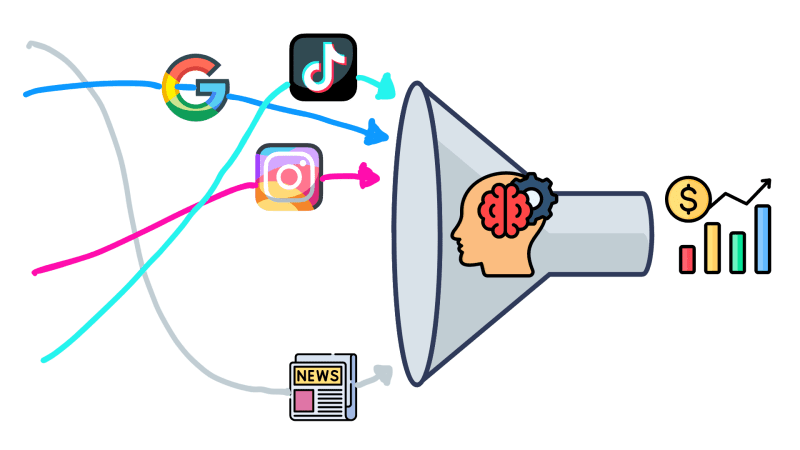
Platforms like Google and Facebook have always changed their algorithms, making it difficult for us to rely on any single source of traffic. But by understanding foundational marketing strategies—like building effective sales funnels and deeply understanding your customers—your business can thrive no matter which platform becomes the next big thing.
Do you remember when no one had even heard of TikTok? Or when Instagram, YouTube, Facebook, and even Google were just starting out?
In digital marketing, the landscape is always shifting, and it’s easy for us to get lost in the latest trends, hacks, and loopholes promising quick traffic. But according to Russell Brunson—who’s sold hundreds of millions of dollars online—the key to long-term success is to focus on timeless marketing principles.
Here’s how traffic works online: every platform follows a similar lifecycle. They start by offering easy, free traffic to attract lots of creators and content. It makes you want to open an account and post there. But eventually, they need to monetize, introducing paid traffic and making free traffic harder to come by. As advertisers rush in, costs go up.
Take Google in the early 2000s: initially, it was a goldmine, with cheap clicks and easy rankings. Then came the infamous “Google slaps” and skyrocketing ad prices. Then each “Google core update” made it harder to game the algorithm for free traffic, making SEO more and more difficult.
Facebook followed a similar path. At first, they provided you with tons of free viral traffic. Then, as they pushed for monetization, you had to pay to get your posts seen. And guess what? Every platform will eventually follow this pattern.
So, how do you break free from this cycle? Focus on evergreen marketing strategies—principles that endure over time. Don’t just chase the latest shiny tricks. Learn from the direct response legends like Dan Kennedy, Gary Halbert, and Jay Abraham.
What should you master?
- Creating an Effective Sales Funnel: Instead of being dependent on getting the cheapest traffic, build a sales funnel that increases your revenue per customer. This way, you can make any traffic source—free or paid—work better. You’ll make more money from less traffic and afford ads on platforms where your competitors struggle to break even.
- Understanding the Psychology of Your Customer: Platforms may change, but people don’t. At the end of the day, every platform wants to show content that keeps users engaged, makes them eager to return, and gets them to see more ads. To succeed, you need to provide real value, not rely on short-term tricks. Deeply understand your customer and what they want.
This section can be summed up with the classic saying, “Give a man a fish, and you feed him for a day. Teach a man to fish, and you feed him for a lifetime.” By mastering core marketing principles instead of just platform-specific tricks, you’ll be prepared to succeed on any traffic platform, no matter which one becomes the next big thing. Even if it’s an AI-generated virtual reality simulation that traps us in an endless cycle of doom-scrolling… actually, let’s hope that one stays in science-fiction!
What is a sales funnel? In Russell Brunson’s first book, Dotcom Secrets, he explains that a sales funnel is a series of web pages designed to take your customer on a tightly guided journey through the buying process. Each page in a funnel is aimed towards ONE specific goal, like getting the visitor to subscribe to a newsletter, register for a webinar, purchase a product, apply for coaching, etc.
You see, traditional websites do not convert well because they present too many options at once, often dozens of links to different pages and articles. In the end, the visitor gets distracted and leaves your website, usually never to return. Russell Brunson says, “One of the fundamental rules of marketing is that ‘A confused mind always says no.’”
What is the lifecycle of all traffic platforms over time?
Always free
Stay the same
Free then paid
Paid then free
🕵️♂️ 2. Customer Avatar: Understand your customer better than they understand themselves
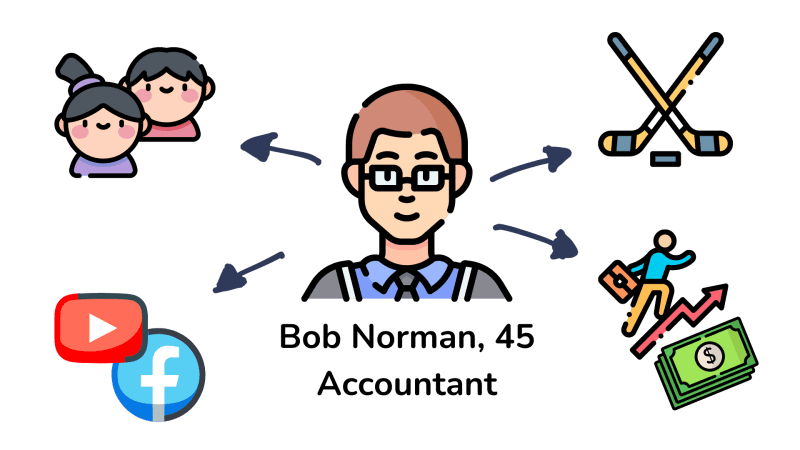
Many business owners fail by focusing too much on their product instead of their customer. To succeed, create a detailed customer avatar with a name and face, so you can visualize and understand your ideal customer as you’re making marketing decisions.
Let’s talk about why understanding your dream customer is crucial for your business. Most business owners make the mistake of getting obsessed with their product or service instead of focusing on their customer.
To do this, you need to create a detailed avatar of your ideal customer. Think of this avatar as a real person with a name and face, but they’re actually a blend of the traits of your best customers.
Take Sally Beauty Supply Company, for example. They created an avatar named “Alexis.” Every decision about which products to offer is made with Alexis in mind. Does this new hair product fit Alexis’s preferences? Would she love this new skincare line? By filtering decisions through Alexis, Sally Beauty ensures they stay aligned with their customers’ needs and wants.
It begins with careful research. Creating your own avatar starts with understanding what your dream customer desires and fears—what are they trying to move towards and move away from? This might mean spending some quality time in Facebook Groups, browsing Reddit threads, or engaging with other social media where your target market hangs out. What are they talking about? What problems are they facing? What goals are they chasing? By doing this work beforehand, you’ll know exactly how to speak to them, what content to create, and what products or services will catch their eye.
As classic ad writer Robert Collier said, “Enter the conversation already taking place in the customer’s mind.”
It’s also about knowing where they gather. Are they on YouTube, Instagram, or TikTok? Which specific accounts, channels or influencers do they follow? Do they subscribe to specific newsletters or visit certain websites regularly? By identifying where your dream customer spends more of their time, you’ll get a head start knowing where you should focus your efforts on driving traffic.
What is NOT a recommended step in creating your customer avatar?
Give a name and face
Guess their preferences
Research online
List their desires
📋 3. Your Dream 100: Identify your Dream 100—who already reaches your customers?
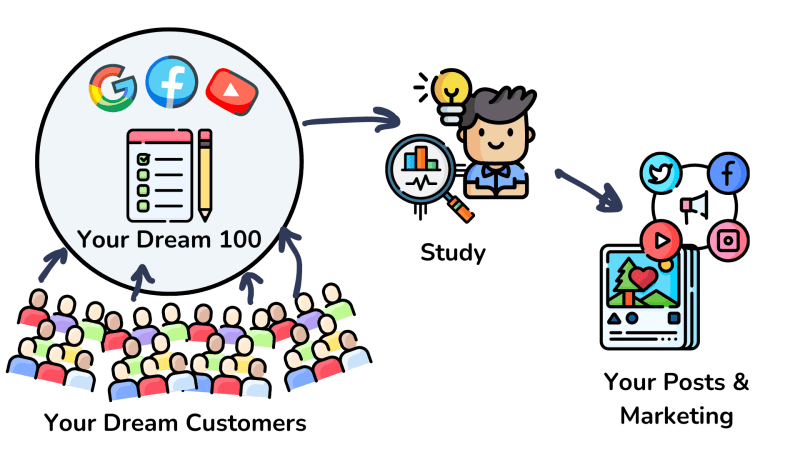
To build a successful business, start by identifying the top 100 people or brands who already have the attention of your dream customers. For every traffic platform, compile a list of 100 names of those who already have the attention of your target audience – influencer, channels, websites, etc. By studying and ‘modelling’ who is already successful, your marketing efforts will be far more successful.
Building a business from scratch can feel overwhelming, but here’s some good news: you don’t have to reinvent the wheel. Your dream customers are already out there, engaging with influencers, channels, and websites. Your job is to figure out who has their attention and then reverse-engineer what they’re doing.
Start by creating a list of at least 100 names or brands for each traffic platform you plan to use. Separate lists for each platform are crucial because they all operate differently. A spreadsheet, notepad document, or pen and paper will all work for this.
For example, if you’re selling a course on building muscle for men and want to use Instagram, begin by listing the top 100 influencers in that space. You probably know a few big names already. Follow their accounts, and Instagram’s algorithm will start suggesting more influencers like them. Additionally, search for specific keywords like “how to get six-pack abs” and follow the top accounts that appear.
This list, as Russell Brunson says, is the cornerstone of your online business. It may take a few hours to compile, but there’s no more valuable way to spend your time. Brunson himself used this method to sell hundreds of thousands of books and grow ClickFunnels to over 100,600 paying customers. However, for him the list grew from a Dream 100 to more like a Dream 736. He identified who was already reaching his target audience and emulated their strategies.
By identifying your Dream 100, you create a roadmap for your marketing efforts. You can observe what content resonates with your audience, what types of posts get the most engagement, and even how these influencers interact with their followers. This insight is invaluable as you develop your strategy to reach the same audience. Later on, these people can also become valuable business collaborators to interview or organize promotions with.
Why is it important to create separate Dream 100 lists for each platform?
They all operate differently
To maximize your ad budget
To avoid duplication of names
Easier to research later
💰 4. Your Breakeven Funnel: Aim for a breakeven funnel that pays for itself
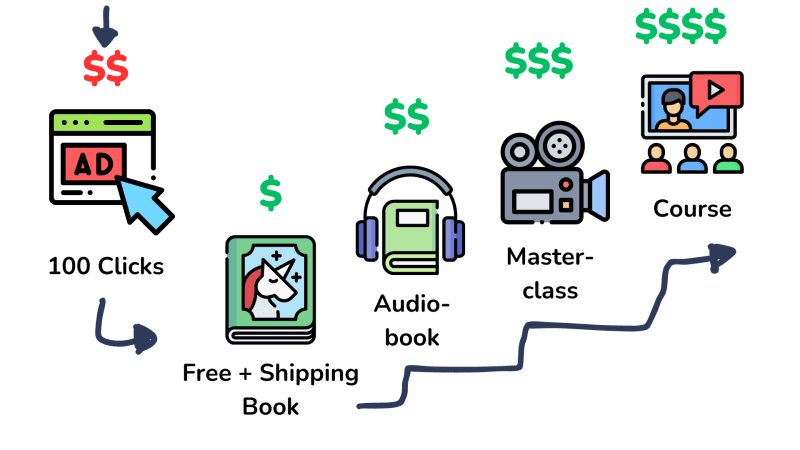
A breakeven funnel allows you to achieve consistent traffic growth by generating enough revenue to cover your ad costs. For example, Russell Brunson uses “free + shipping book funnels,” where he offers a free book and covers costs through upsells. This strategy ensures he can continuously buy traffic without losing money.
When it comes to driving traffic online, there’s an ongoing debate about whether free or paid traffic is better. However, the term “free traffic” can be misleading because you still pay for it with your time. So Russell Brunson prefers to call it “earned traffic.”
On almost every platform, you can either earn your way in by producing valuable content or buy your way in by paying for ads. Brunson’s advice? Do both. Paid traffic helps you start quickly but can be cut off just as fast, while earned traffic is slower at the beginning but tends to build over time.
Your ultimate goal is to create a breakeven funnel—a system where the revenue generated from your sales covers the costs of advertising. In essence, a breakeven funnel gives you the freedom to scale your traffic without worrying about losing money.
One of Brunson’s favorite strategies is the “free + shipping book funnel.” Here’s how it works: he runs ads to a page offering his book “Dotcom Secrets” for free, with the customer only paying $7.95 for shipping and handling. Now, if this were the whole story, he’d actually lose money on every book. But the magic happens after the initial payment.
Once someone opts for the free book, they are shown a series of related offers at increasing price points. First, they can add the Dotcom Secrets audiobook for $37, and 21% of buyers take this offer. Then, there are two additional upsells priced at $97 and $297, with 10% and 4% of customers purchasing these, respectively. By the end of this sequence, Brunson averages $37 per order.
This strategy allows him to buy traffic from various sources and make it profitable. Often, we assume our problem is that we need to find more free and very cheap sources of traffic. But Brunson says the problem is more often that your funnel isn’t optimized to maximize the value of each customer.
By adding strategic steps to your funnel, you can increase your average order value, enabling you to afford more traffic sources that your competitors might find too expensive. It’s the ultimate unfair advantage. And even if your focus is one free or earned traffic, this additional revenue will let you invest in creating more valuable content than anyone else.
What is the major benefit of creating a breakeven funnel?
Reduce ad costs
Increase social media followers
Build an email list
Generate consistent traffic
📧 5. Your Email List: Always convert traffic into your email list
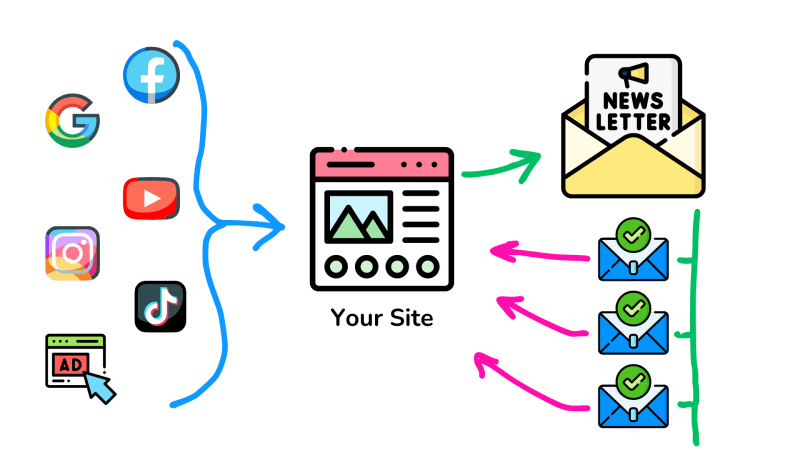
Aim to convert all traffic—free or paid—into your email subscribers. This allows you to reach your audience directly with new content and promotions, without relying on third-party platforms or paying for ads. Building a list gives you leverage, as even a small percentage of conversions can generate significant revenue.
Whether you’re driving traffic for free or paying for it, your ultimate goal should be to transform that traffic into your email list. Why? Because that is a traffic source that YOU own and control. Owning an email list means you can reach your audience directly, bypassing the whims of algorithms and the need for continuous ad spend.
Russell Brunson explains how his mind exploded when he realized the power of an email list and the kind of leverage it gives you. Imagine having a list of 10,000 people. Even if just 1% of them buy a $50 product, that’s $5,000 in your pocket. And you can do this over and over again. Brunson suggests that you should be able to make at least $1 per person on your email list each month. So, if your goal is to make $10K per month, aim to build a list of 10,000 people.
Other types of lists exists, like Facebook Messenger lists or push notifications, but they are newer and may not have the staying power of email. Email has stood the test of time. For some businesses, especially local ones, sending physical mail can also work wonders.
So, how do you build this list? Offer something of value for free—this is called a lead magnet. It could be a free book, a webinar class, a report, or a video that shows how to do something your audience wants to learn. By providing value upfront, you entice people to give you their email addresses.
If you want more actionable steps and tips for creating an effective lead magnet, then look at the book $100M Leads by Alex Hormozi. He wrote, “A lead magnet is a complete solution to a narrow problem.” So, when creating your lead magnet, begin with solving a very specific problem for your dream customer. Once that initial problem is solved, it should reveal another larger problem your customer faces, which is solved by your core offer. Some good lead magnets include:
- Free Analysis: A test or consultation that diagnoses the bigger problem. Like a chiropractor offering a posture check.
- Sample or Trial: Give away your core product, but in limited quantity or time. Like Netflix’s free trial.
- First Step Free: Providing the first part of the solution free. Like an investment calculator that leads to financial advisor services.
What's the #1 reason to convert traffic into your own email list?
You avoid social media
Reduce marketing costs
It's an asset you control
Increase your traffic
🔄 6. Email Follow Up: Follow up with email marketing sequences
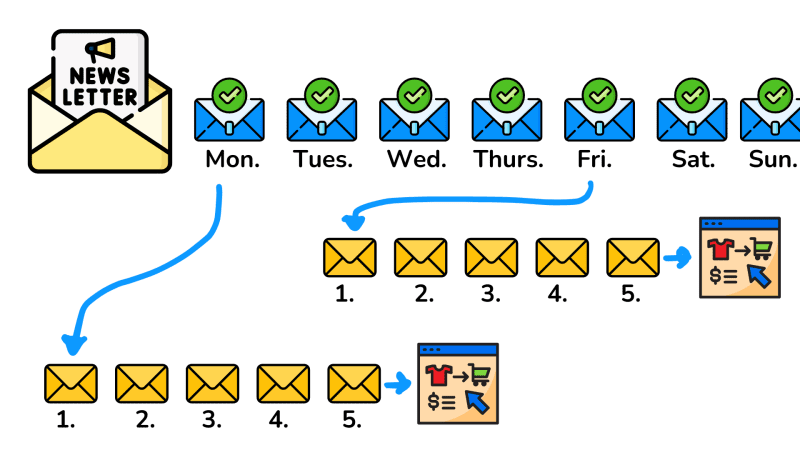
When you maintain consistent engagement with your leads, their trust in you goes up and therefore sales do too. This can be done through email follow-up sequences, which are pre-written series of emails designed to drive conversions for one specific offer. And also through broadcast emails, which are standalone messages that bring people back into your funnels.
Let’s dive into why follow-up funnels are crucial for multiplying your sales. Engaging with leads doesn’t end once they’ve shown interest; it’s just the beginning. By implementing follow-up funnels, you can keep your leads engaged and guide them towards making a purchase.
There are two main ways to follow up: email follow-up sequences and broadcast emails.
Email follow-up sequences
First, let’s talk about email follow-up sequences. These are a series of pre-written emails that are connected with each other, designed to tell a complete story related to a particular offer. The goal is to introduce yourself, build a connection, communicate the value of your product, and then close the sale.
In his sequences, Russell Brunson dedicates 3 emails at the end for three types of sales closes: emotional close (your core pitch), logical close (stacking the value and offering guarantees), and fear-based close (creating urgency or scarcity).
For a fascinating look at the psychological triggers that cause people to buy something, check out our summary of Influence by Robert Cialdini. He breaks down 6 principles of persuasion, including scarcity, social proof, reciprocity, commitment and consistency, and Liking. It’s one of the top-recommended books by highly effective marketers and copywriters.
For example, if you’re selling an online course, your email sequence might start with an email introducing yourself and sharing your story. The next few emails could showcase the benefits of your course, tell stories from your past students, and address common objections. As you near the end of the sequence, you’d use the emotional close by recapping the main desire your course fulfills, the logical close by outlining the value and guarantees, and the fear close by mentioning limited spots or a closing deadline.
Broadcast emails
Then, there are broadcast emails. Unlike follow-up sequences, these are standalone emails sent to your entire list. They usually start with an entertaining tidbit or anecdote to grab attention and then tie back into one of your funnels. The purpose is to recapture someone’s interest and bring them back into your follow-up sequences for a specific product.
For example, imagine you run a coaching business that helps busy professionals achieve work-life balance. You might send a broadcast email sharing a funny story about a recent challenge you faced, like struggling to find time for both a critical client meeting and your kid’s soccer game. You could then explain how your coaching program teaches time management strategies to avoid such stressful situations. This not only entertains your audience but also highlights the practical benefits of your coaching, subtly directing them back to your sales funnel.
By consistently following up with your leads through these methods, you keep your product or service top-of-mind and guide your leads through the decision-making process. It’s about maintaining a presence in their inbox, building trust, and making it easy for them to choose your solution.
Which of the following is NOT a type of close used by Russell Brunson in his email sequences?
Emotional close
Logical close
Fear-based close
Technical close
🗣️ 7. Your Show: Create your own show to collaborate with other creators
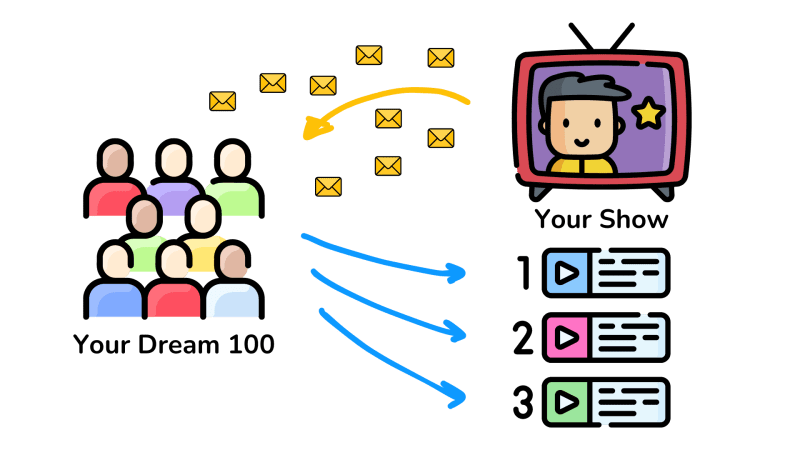
Creating a show provides a way to connect with your Dream 100 by offering them a platform to promote their work. This strategy helps you build relationships, enabling future collaborations and promotion of your business on their platforms. Choose a platform you’re familiar with and commit to consistent content creation.
Let’s explore why creating your own show is a powerful strategy to connect with your Dream 100. To reach these influential individuals, you need to offer them something valuable.
Russell Brunson recommends giving them a platform to extend their own influence and market reach. Think of it like a new movie release; the actors promote it on all the late-night talk shows. Your Dream 100 are no different; they want to promote their current projects, whether it’s a book, product, or service.
Start by choosing a platform you’re comfortable with and naturally good at. If you spend most of your social media time on Instagram, that’s a good sign you should focus on Instagram as your primary show platform. Understanding how the platform works will make it much easier than starting from scratch.
Here are some key points to consider:
- Publish Daily for a Year: Commit to publishing daily content for at least a year, without worrying too much about results. This consistency helps you find your voice while you’re still under the radar. This is how Russell Brunson grew his Marketing Secrets podcast.
- Document, Don’t Create: If you’re worried about creating content that is really polished or feel like you’re not enough of an expert, take the advice of social media expert Gary Vaynerchuk: document your journey. Share what you’re learning on the way to achieving a goal that your audience also shares. This approach removes the pressure to be perfect and keeps your content relatable.
- You Only Need One Yes: Persistence pays off. Take Tellman Knudson’s story: he contacted his Dream 100 for interviews, and the first 48 said no. But then he got one yes. That person recommended three others who also said yes. By the time he finished, the next 30 people all said yes, and he made $1 million in his first year alone. Brunson says most markets are like a group of cool kids at school – if you get “in” with one of them, connecting with the rest become easy.
Creating your own show isn’t just about content; it’s about building relationships. When you provide a platform for your Dream 100 to shine, you’re building a foundation for future collaborations. These relationships can lead to them promoting your business on their platforms or even working directly with you. So, pick your platform, start creating, and remember: it’s about consistent effort, not overnight results.
To avoid feeling overwhelmed with content creation, what strategy is recommended?
Polish every episode
Document your journey
Hire a content creator
Post sporadically
📈 8. Free Traffic: Get free traffic by modelling those already successful
To effectively attract free traffic on your chosen platform, observe what your Dream 100 are doing that works. Spend 10 minutes daily analyzing their popular posts and 1 hour daily posting your own content. Social media should be approached like a party—engage with entertaining stories and interesting questions to draw people in, then guide them to your funnel through your profile link.
Let’s talk about how to get free traffic on your chosen platform, also known as organic traffic.
The big secret? Look at what your Dream 100 are already doing successfully and model it. Spend about 10 minutes each day studying popular posts from your Dream 100. This doesn’t mean copying them, which is a bad idea. Instead, study the format and type of content they’re publishing because that’s what’s working right now. Backward-engineer why they’re popular. Then, put your unique spin on it.
For example, you might notice that inspirational quotes are a hit in your niche, or maybe personal photos from the influencer’s daily life get the most engagement. Each market is a bit different, so find what is working best for yours.
Think of social media as a big party. This lesson comes from Perry Belcher and it’s a game-changer. Initially, Russell Brunson tried using Twitter but failed miserably because he was trying to sell directly. It’s like going to a party and making sales pitches—nobody wants to talk to you. Instead, talk like you would at a party: share an interesting story, something funny or entertaining that happened to you, add to conversations, and ask questions that intrigue people in your market.
If someone connects with you, they’ll visit your profile, which is where you can direct them to your funnels. Most social media platforms let you put a little bio and a link to your website. Use this space to send people to your funnel, where the actual selling happens. This way, you’re converting random visitors into potential buyers without being ‘salesy’ on social media.
To make this work, for your primary platform create a strategy that allows you to publish content in one hour each day. This is short enough to be sustainable for most business owners. As with everything, remember that consistency is key.
What is the most important step in gaining free traffic, according to Traffic Secrets?
Model successful content
Engage authentically
Sell directly on posts
Hop on popular trends
🧪 9. Paid Traffic: Master paid traffic through testing and optimization
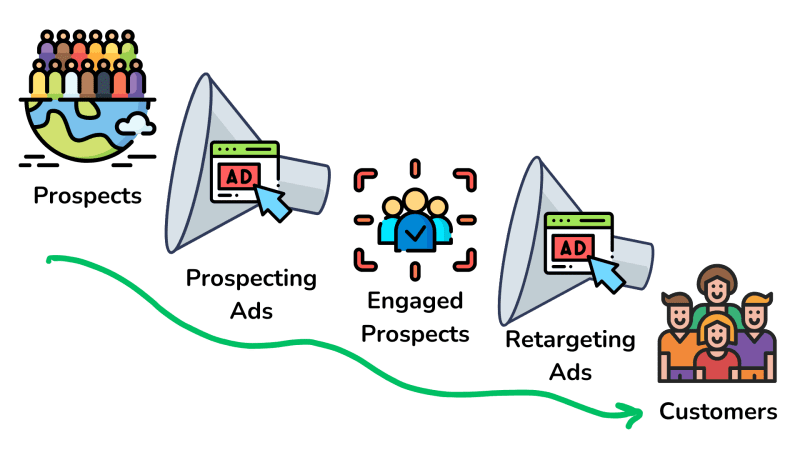
To succeed with paid advertising, your main goal should be to have a breakeven funnel that generates more in sales than your ad costs. There are two main types of ads: prospecting ads target new audiences to start engagement, and retargeting ads focus on those who have already engaged, to build familiarity and drive conversions.
Let’s dive into the world of paid traffic and how to master it. While each specific platform is different (like Facebook Ads vs Google Ads), you can learn foundational strategies that will make you more successful no matter where you start buying ads.
The biggest secret is the breakeven funnel, says Russell Brunson. This is a funnel that makes enough sales to cover the cost of advertising. If you can achieve a funnel that simply breaks even, then you’ll be able to generate new leads, day after day, without worrying about losing money. We already talked about this concept before, so let’s move on.
Once you have a funnel set up, start by testing a new ad campaign with a $100 budget. If you don’t break even, rework your funnel and try again. This iterative process helps you refine your strategy until you find what works. It’s completely normal for Brunson to fail at breaking even the first time he tests a new funnel. Then he just looks at his metrics to see what the problem is. If the conversion rate is too low, maybe he will test new initial headlines or landing pages. If the profit per customer is too low, maybe he adds and extra step or two to the funnel.
There are two main types of ads to focus on: prospecting ads and retargeting ads.
- First, prospecting ads are targeted towards people who don’t know you yet. You can choose who sees these ads, ideally targeting the audiences of your Dream 100. You can further narrow down by interests, age, and other demographics. Prospecting ads can be challenging—they might take up 80% of your ad budget but only generate 20% of your sales. Just remember the primary goal here is to fill your retargeting lists.
- Next, we have retargeting ads. These ads are shown to people who have seen you before on the platform or engaged with a previous ad. They’re warmer leads, so you’ll get most of your results, like email subscribers and conversions, from retargeting ads. Typically, you’ll see 80% of your results from just 20% of your budget with these ads. It often takes several exposures to build familiarity before someone goes through your funnel.
Here’s a specific example. Let’s say Michael runs a fitness coaching business for busy professional men. He might start with prospecting ads targeting men over 40 interested in fitness, health, and wellness. These ads introduce his brand and offer a free resource, like a workout plan, to attract interest. The goal is to get people to click and visit his website, which adds them to a retargeting list.
Once they’ve engaged with an initial ad, Michael the fitness coach can hit them with retargeting ads. These ads might showcase testimonials from satisfied clients, a limited-time discount on coaching services, or an invitation to join a free webinar. Since these people are already somewhat familiar with his brand, these retargeting ads are more likely to convert them into paying customers.
As always, a great place to start is by studying your Dream 100. If you’ve liked their pages or subscribed to their channels, you’ll begin seeing their ads. Pay close attention to how they structure their ads, their calls to action (CTAs), and the type of funnels they use. If they’re spending money on these ads, it’s a good sign they’re profitable.
Mastering paid traffic is all about testing, learning, and optimizing. Start small, analyze your results, and continuously improve your approach. By leveraging both prospecting and retargeting ads effectively, you’ll build a robust paid traffic strategy that drives consistent growth for your business.
What should you do if your first ad campaign with a $100 budget doesn’t break even?
Try a different platform
Rework the funnel and retry
Increase your budget
Try retargeting ads
📱 10. Every Platform is Different: Platform-specific strategies for YouTube, SEO, Instagram, etc.
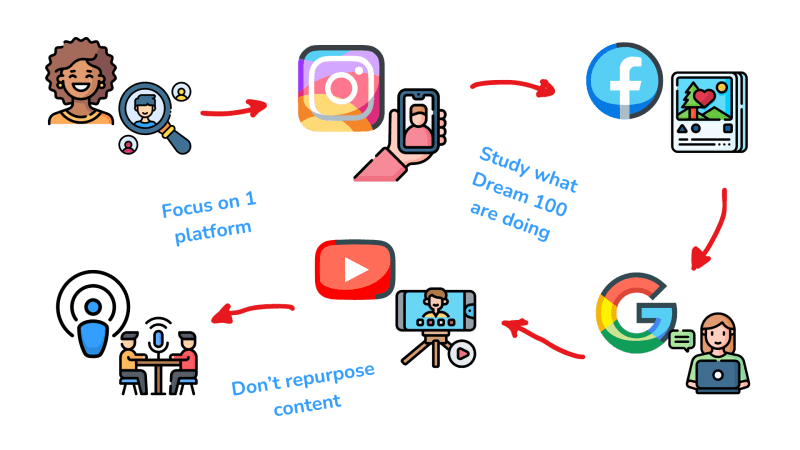
Each platform—Instagram, Facebook, YouTube, Google, and podcasting—operates in a unique way that you must take the time to master before moving on to the next one. Go deep on one primary platform before expanding to others. Study what your Dream 100 are doing to succeed, then create your strategy based on that.
Let’s talk about mastering platform-specific strategies to grow your online presence effectively.
In the beginning, you’ll want to focus totally on one platform until you make it work for your business. Many beginners make the mistake of trying to be everywhere, but as a result they gain traction nowhere. ClickFunnels hit over $100M in sales on Facebook alone, before they began expanding to other platforms using a team of people. Laser focus is how you’ll succeed at the beginning. Find your Dream 100 on your chosen platform and study their strategies to replicate their success.
Each platform speaks their own “language” when it comes to what kind of content and format works best. Some marketing experts talk about filming a video for YouTube, then ripping the audio to a podcast, then posting the transcript to your blog. But people are looking for different things on each platform, and this is why repurposing content from one platform to another usually doesn’t work, even though it sounds so appealing.
For example, people on YouTube may want short educational videos mixed with entertainment, while podcasts tend to be long-form interviews, and blog posts provide a highly detailed list of items. That’s why, if you take a great YouTube video, and simple copy-paste the script to your blog, it usually won’t work for getting traffic.
Some platform-specific tips:
- Instagram: Start with Instagram if you enjoy visual storytelling. Brunson recommends posting twice daily, rotating your photos between five categories you’re passionate about. For example, Jenna Kutcher rotates through marriage, body positivity, photography, fashion, and travel. Each post should include a relatable story in the caption. Another feature is Instagram Stories, which lets you document your day with short clips, like a personal reality TV show. Russell Brunson often posts 10 or more quick stories daily to keep his audience engaged.
- Facebook: You’ll want to optimize four key areas: your personal profile for free organic traffic, a “Page” dedicated to your business for paid traffic, Groups where you can contribute to discussions or create your own, and Messenger bots for engaging and following up with your audience. Each area offers unique opportunities to connect and grow.
- Google: Focus on creating high-quality, authoritative content. Research what content your competitors are getting Google traffic with (using tools like Ahrefs or SEMrush), then make your content longer and better than theirs—this is called the skyscraper technique because it’s like you’re adding a few more “floors” on top of what anyone else has done to make the highest value content. Ranking on Google is a lot about backlinks, so promote your posts by reaching out to sites that already link to similar content, asking them to link to your more up-to-date post instead. Aim to publish one detailed article per month, one guest post per week on another side, and spend two hours per week promoting on social media. You can also buy your way in, purchasing ads on websites and blogs already popular on Google.
- YouTube: This platform offers long-term traffic growth, with videos continuing to get views years after being posted. Study your Dream 100’s videos to understand their style, length, thumbnails, and titles. Optimize your channel page so visitors know what future value they can expect by subscribing. To get more views, focus on increasing your click-through rates (CTR) and video retention rates. The more people click to watch your video and the longer they stay, the more the YouTube algorithm will recommend your video to others. Choose one main keyword and include it somewhere in your title. Design a compelling thumbnail – often one that includes a big face, bright colors, and few words. Structure your videos with a hook that grabs attention, a short introduction who you are, valuable content that lasts around 5-10 minutes, and a call to action (CTA). Promote your videos through email and social media to generate initial engagement. For more step-by-step strategies related to this, check out our summary of YouTube Secrets, written by two highly successful YouTubers.
- Podcasting: Podcasts can bring some of your most valuable customers, but the biggest problem is that it’s hard for people to discover your podcast. The best way to grow is by getting interviewed on other related podcasts, then mentioning your show at the end. This approach has worked well for people like Jordan Harbinger, who after getting kicked off his old major podcast, made the rounds promoting his new show and quickly hit millions of downloads. Podcasts have a compounding effect—early episodes continue to gain listeners over time. Consider buying ads on popular podcasts to expand your reach.
When it comes to getting more views in the YouTube algorithm, what does Brunson NOT mention as being important?
Higher thumbnail click-through rate
Compelling title with primary keyword
Consistent weekly uploads
Short video length
🏠 11. Your Funnel Hub: Create a funnel hub as your website homepage
To effectively combine branding and direct response, create a “funnel hub”—a home page that looks like a traditional website but functions as a collection of funnels.
Traditionally, there’s been a conflict in the marketing world between branding and direct response. Branding is concerned with how people feel, while direct response is more about measurable results. For a long time, Russell Brunson was 100% about direct response, but then he hit a wall with his company.
Brunson was trying to get some press releases published to increase the visibility of his website in the search results, but the PR companies automatically rejected every proposal he sent, even saying his home page looked like a “scam.”
The problem was that his home page contained very little information – just a headline and email form to collect leads. While this page performed well at converting traffic into email subscribers, it was now holding him back, making his business lack credibility. The second problem was that traditional homepages are terrible for conversions, because they’re unfocused, sending people in a dozen different directions.
The solution Brunson and his team came up with was a hybrid approach called a “funnel hub.” The funnel hub looks like a traditional home page on the surface, but it’s actually a catalog of your funnels.
Your funnel hub has a logo and menu links on top, then a “hero section” that highlight your main value proposition, and perhaps your latest content from your blog or social media. Most importantly, there are prominent call-to-action links sending people to each of your main funnels.
For example, Russell Brunson has free book funnels for all his major books. So, if someone wants to learn about funnels, they are sent to claim a copy of his book Dotcom Secrets. If they want to learn about traffic, they can get this book Traffic Secrets. And if they want to understand conversion, they get his third book Expert Secrets.
By creating a funnel hub, you effectively blend the best of both worlds: the trust-building elements of branding and the conversion-focused strategies of direct response marketing. This not only attracts more traffic but also ensures that visitors are funneled into the right paths to become leads or customers.
🤝 12. Affiliate Marketing: Affiliate marketing is THE most powerful traffic strategy
By nurturing a network of affiliates who promote your products, you leveraging their existing audiences and specialized traffic expertise to multiply sales in your business, in exchange for sales commission.
Russell Brunson has apparently saved the best traffic strategy of all for last. He says that building an affiliate program has generated more traffic and sales for his businesses than any other strategy.
He tells a story of his epiphany reading a marketing forum very late one night, when in the online discussion the owner of the forum who was extremely wealthy, said the best traffic source of all was his “own network of affiliates.”
If you’re new to online marketing, this needs a little explanation. Affiliates are essentially partners who promote your products or services to their own audiences. They earn a commission for every sale they generate, creating a win-win situation for both you and them. By opening your offers up to affiliates, you can potentially reach a much larger audience through more ways of generating traffic than you every could on your own.
Here’s how it works: you set up an affiliate program where individuals or businesses can sign up to promote your offerings. They use unique affiliate links to track the traffic and sales they generate. In return, you pay them a commission for each successful referral. This incentivizes them to actively market your products, leveraging their credibility and relationships with their followers. Many online selling apps like ClickFunnels and Shopify allow you to set up an affiliate program.
The beauty of affiliate marketing is its scalability. The more affiliates you recruit, the more potential traffic and sales you can generate. Plus, you only pay for results—commissions are based on actual sales, making it a cost-effective strategy. There’s a reason why many of the largest ecommerce companies like Amazon have long offered an affiliate program.
To get started, create an attractive affiliate program with commission rates slightly better than your competitor’s and valuable resources like marketing materials and training. Reach out to potential affiliates who align with your brand and have a relevant audience. Build relationships with them, provide ongoing support, and reward major sales milestones to keep them motivated.
- Master marketing principles: Read marketing classics by Dan Kennedy, Gary Halbert, and Jay Abraham. I recommend starting with Scientific Advertising by Claude Hopkins, a foundational direct marketing book they all recommended. Apply direct response techniques to your campaigns.
- Create a customer avatar: Detail your ideal customer with name, demographics, and interests. Use surveys and social media to gather insights.
- Identify your Dream 100: List 100 influencers and brands that engage your target audience. Follow and study their successful content.
- Test your funnel: Set up a simple sales funnel. Test with a $100 ad budget and measure results, optimizing until you break even.
- Build your email list: Offer a valuable lead magnet in exchange for emails. Use opt-in forms and landing pages to capture sign-ups.
- Follow up with emails: Create a sequence to build rapport, educate, and sell. Use broadcast emails for timely updates and promotions.
- Start your own show: Choose a platform like YouTube or podcasting. Invite guests from your Dream 100 to collaborate and share their expertise.
- Model successful content: Analyze what works for your Dream 100. Adapt their content style to your platform and post consistently.
- Test paid traffic: Start with a small ad budget. Track metrics like CTR and conversions, adjusting your ads based on performance.
- Use platform-specific strategies: For YouTube, create engaging videos with strong hooks and clear CTAs. For SEO, target long-tail keywords with high-quality content. For Instagram, post daily and use stories to engage.
- Create a funnel hub: Design a professional homepage that links to your funnels. Include a logo, menu, hero section, and clear CTAs.
- Set up an affiliate program: Offer attractive commissions to affiliates. Recruit by reaching out to influencers and partners, and provide them with marketing materials.

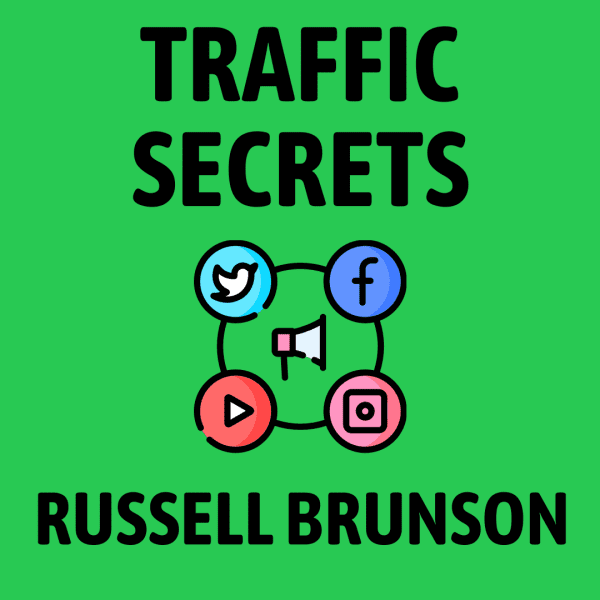




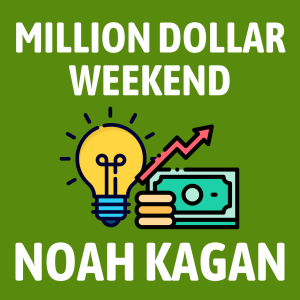

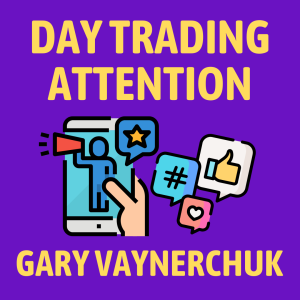
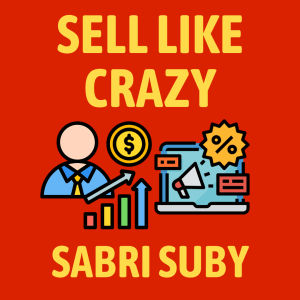








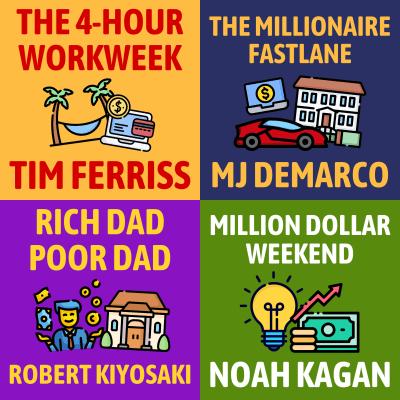


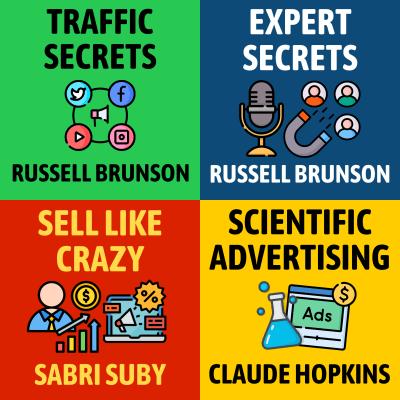

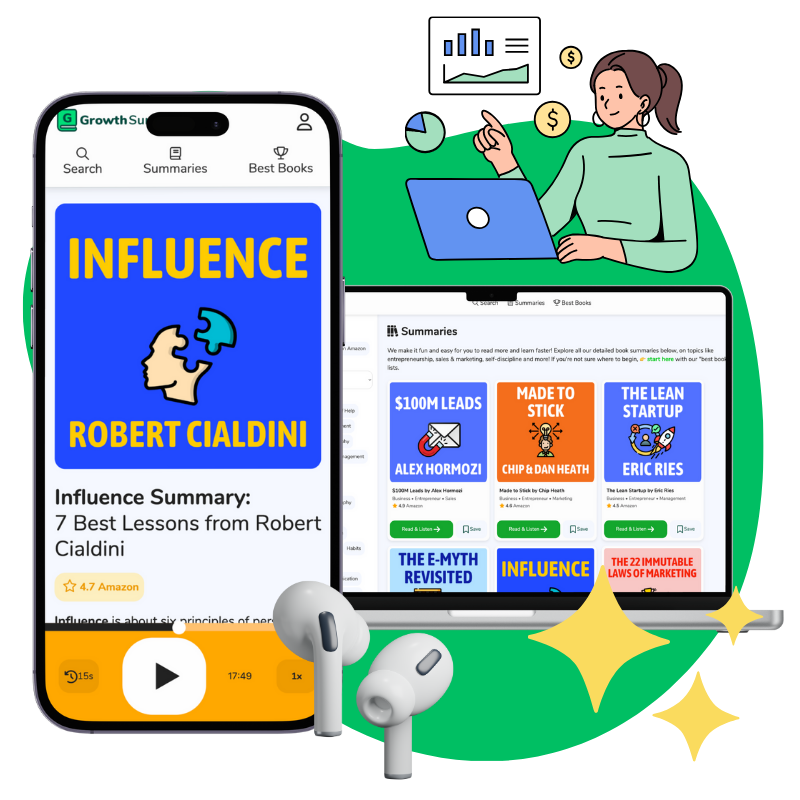
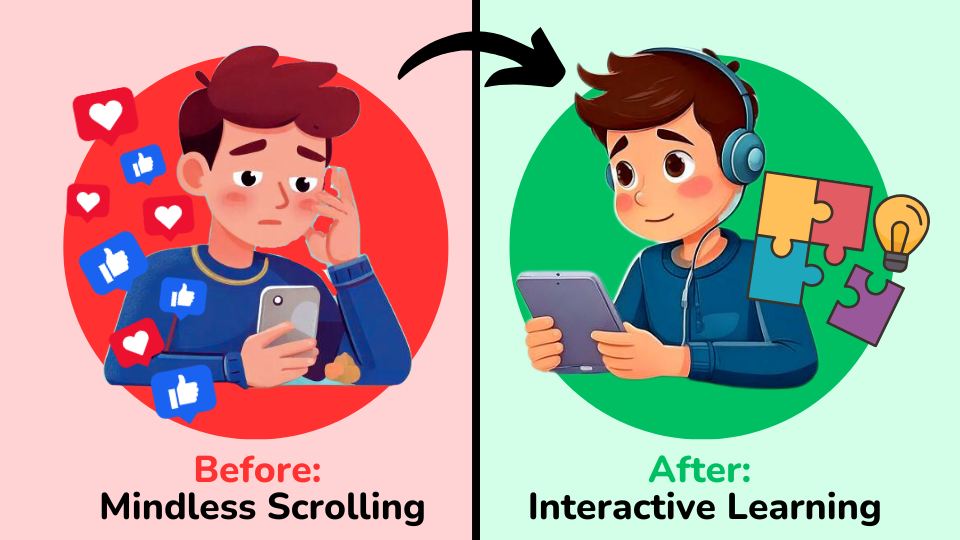








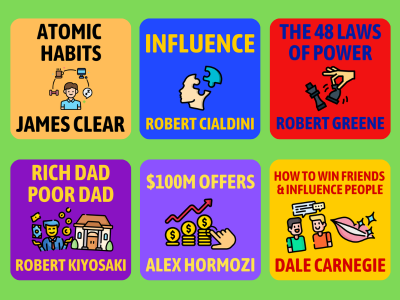
Community Notes